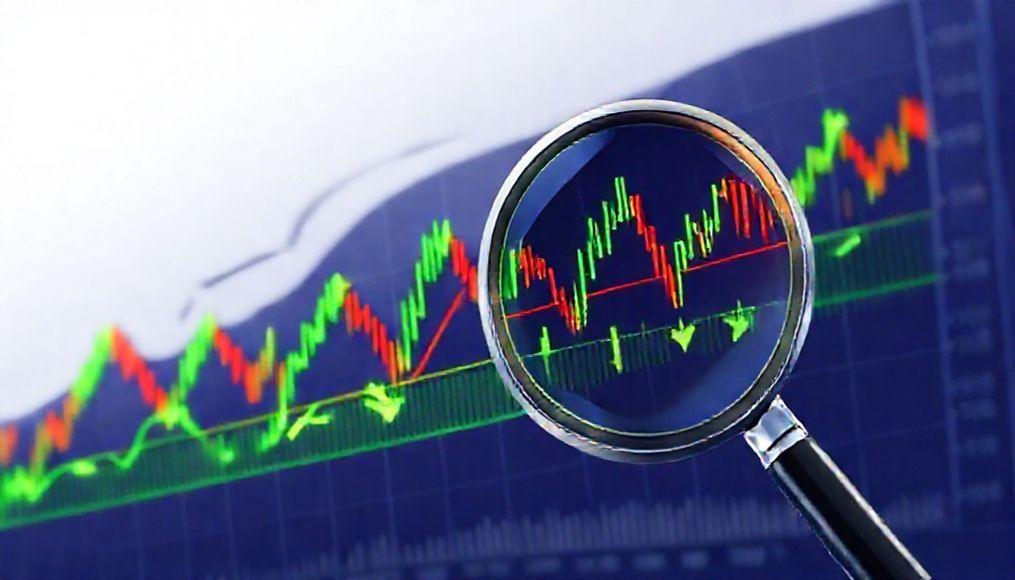Introduction to the Stochastic Oscillator
The Stochastic Oscillator is a momentum indicator that measures the closing price of an asset relative to its price range over a given period. Originally developed by George Lane in the 1950s, it is used to identify overbought and oversold conditions, as well as potential divergence signals.
What is the Stochastic Oscillator?
The Stochastic Oscillator is based on the assumption that closing prices tend to cluster near the top of the price range in uptrends and near the bottom of the price range in downtrends. The indicator consists of two main lines: %K and %D.
- %K: Represents the current value of the oscillator and is calculated using the formula: %K = ((Current Closing Price - Lowest Price in Period) / (Highest Price in Period - Lowest Price in Period)) * 100
- %D: Is a simple moving average of %K, typically calculated over 3 periods.
Understanding the Components of the Stochastic Oscillator
To understand how to use the Stochastic Oscillator effectively, it's essential to understand its components and how to interpret them.
The %K Line
The %K line is the main line in the Stochastic Oscillator. It reacts more quickly to price changes. When the %K line rises, it indicates that the price is approaching the top of its price range, which may indicate buying pressure. Conversely, when the %K line falls, it indicates that the price is approaching the bottom of its price range, which may indicate selling pressure.
The %D Line
The %D line is a simple moving average of the %K line. The %D line is smoother than the %K line, thus providing more stable signals. Many traders use the %D line as a signal line to identify buying and selling opportunities.
Overbought and Oversold Levels
The levels 80 and 20 are important levels in the Stochastic Oscillator. When the oscillator exceeds the level of 80, the asset is considered to be in an overbought zone, which may indicate that the price is about to reverse. Conversely, when the oscillator falls below the level of 20, the asset is considered to be in an oversold zone, which may indicate that the price is about to rise.
Calculating the Stochastic Oscillator
Although most trading platforms calculate the Stochastic Oscillator automatically, understanding how it is calculated can help you understand how it works.
%K Calculation Formula
As mentioned earlier, %K is calculated using the following formula:
%K = ((Current Closing Price - Lowest Price in Period) / (Highest Price in Period - Lowest Price in Period)) * 100For example, if the current closing price is $50, the lowest price in the period is $40, and the highest price in the period is $60, then %K would be:
%K = ((50 - 40) / (60 - 40)) * 100 = 50%D Calculation Formula
%D is calculated as a simple moving average of %K. For example, if you are using a 3-period moving average, you would calculate the average of %K for the last 3 periods.
Trading Strategies Using the Stochastic Oscillator
There are many strategies that can be used to trade using the Stochastic Oscillator. Here are some of the most common strategies:
%K and %D Line Crossovers
One common strategy is to look for crossovers between the %K and %D lines. When the %K line crosses above the %D line, it is considered a buy signal. Conversely, when the %K line crosses below the %D line, it is considered a sell signal.
Example: If Apple (AAPL) is trading at $170 and the %K line crosses above the %D line, it may be a signal to buy the stock. You can set a stop-loss order below the recent low to protect your capital.
Trading Overbought and Oversold Conditions
Another strategy is to look for overbought and oversold conditions. When the oscillator exceeds the level of 80, it may be a signal to sell the asset. When the oscillator falls below the level of 20, it may be a signal to buy the asset.
Example: If the price of Bitcoin (BTC) is rising rapidly and the Stochastic Oscillator reaches a level of 90, it may be a signal to sell some of your Bitcoin holdings.
Using Divergence
Divergence is when the price and the indicator move in opposite directions. Divergence can indicate a potential reversal in the trend. For example, if the price is making higher highs while the indicator is making lower highs, this is considered bearish divergence, which may indicate that the price is about to fall. Conversely, if the price is making lower lows while the indicator is making higher lows, this is considered bullish divergence, which may indicate that the price is about to rise.
Example: If the S&P 500 is making higher highs, but the Stochastic Oscillator is not confirming these highs, it may be a sign of a weakening uptrend.
Combining the Stochastic Oscillator with Other Indicators
The effectiveness of the Stochastic Oscillator can be improved by combining it with other technical indicators.
Moving Averages
Moving averages can be used to confirm the signals generated by the Stochastic Oscillator. For example, if the Stochastic Oscillator is indicating a buy signal and the price is trading above its 200-day moving average, this reinforces the bullish signal.
Relative Strength Index (RSI)
The Relative Strength Index (RSI) can be used in conjunction with the Stochastic Oscillator to confirm overbought and oversold conditions. If both indicators are indicating that the asset is in an overbought zone, this increases the likelihood of a bearish reversal.
Trading Volume
Trading volume can help confirm the signals generated by the Stochastic Oscillator. For example, if the Stochastic Oscillator is indicating a buy signal and there is an increase in trading volume, this reinforces the bullish signal.
Advanced Tips for Using the Stochastic Oscillator
Here are some advanced tips for using the Stochastic Oscillator:
- Optimize Settings: Experiment with different settings for the Stochastic Oscillator to find the settings that work best for the asset you are trading and the timeframe you are using.
- Use Multiple Timeframes: Analyze the Stochastic Oscillator on multiple timeframes to get a more comprehensive view of the market.
- Be Patient: Don't rush into trading based on a single signal from the Stochastic Oscillator. Wait for confirmation from other indicators or price patterns.
Common Mistakes to Avoid
Here are some common mistakes that traders make when using the Stochastic Oscillator:
- Relying Only on the Stochastic Oscillator: Don't rely solely on the Stochastic Oscillator to make trading decisions. Use it in conjunction with other technical indicators and fundamental analysis.
- Ignoring the Overall Market Context: Consider the overall market trend before making trading decisions based on Stochastic Oscillator signals.
- Not Using Stop-Loss Orders: Always use stop-loss orders to protect your capital.
Real-World Examples from the Arab Market
Let's say you are trading in the Saudi Stock Exchange (Tadawul). You can use the Stochastic Oscillator to analyze the shares of Saudi Aramco (2222.SR). If the Stochastic Oscillator indicates that the stock is in an oversold zone, and there is bullish divergence, it may be a signal to buy the stock.
Another example: If you are trading in the foreign exchange market (Forex) and trading the US Dollar/Saudi Riyal (USD/SAR) pair, you can use the Stochastic Oscillator to identify buying and selling opportunities. If the Stochastic Oscillator indicates that the pair is in an overbought zone, and there is a bearish crossover between the %K and %D lines, it may be a signal to sell the pair.
Advantages and Disadvantages of Using the Stochastic Oscillator
Advantages
- Easy to use and understand.
- Generates many signals.
- Can be used to identify overbought and oversold conditions.
- Can be used to identify divergence.
Disadvantages
- Can generate false signals, especially in volatile markets.
- May be lagging at times.
- Should be used in conjunction with other technical indicators.
Conclusion
The Stochastic Oscillator is a powerful tool for analyzing momentum in financial markets. However, it is important to use it with caution and combine it with other technical indicators and fundamental analysis. By following the strategies and tips outlined in this article, you can improve your chances of success in trading using the Stochastic Oscillator.



